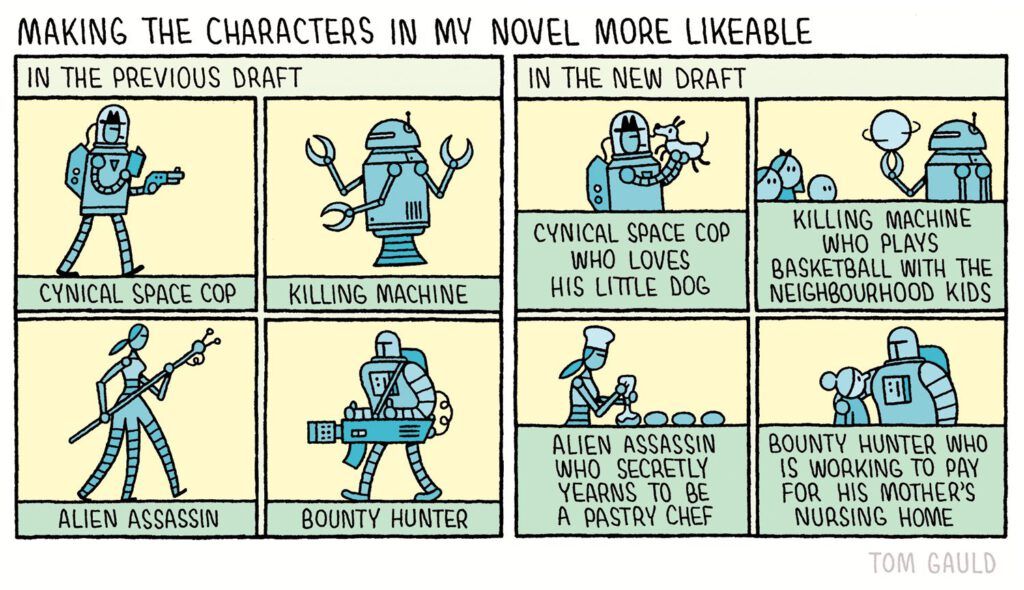Last Updated on March 20, 2024
People don’t vote for politicians, they don’t identify with nations, and they don’t even worship deities – their focus is the stories these things tell. If you want to connect with people, you need to have them like you and trust you. Effective storytelling helps.
- How Does Storytelling Sell Things?
- Find Out More About Storytelling
- Building the Story Behind Your Marketing: a Basic Template
If you are on social media, and you probably are, you know that it is a place where stories are told. People can get to know you and develop trust there. Social media really helps your business connect with people.
If this were an article about SEO, it would first be important that they can find you too.
Find you, like you, trust you. That’s what you need if you are going to sell anyone anything.
If people don’t know you or don’t like or trust you, they are unlikely to buy something from you. It’s the same with brands we purchase. We purchase those brands we identify with. In essence, we purchase brands we trust. This is called “brand affinity”.
Brand affinity is the conviction among customers that a company shares their values and philosophy.
How Does Storytelling Sell Things?
Storytelling and affinity is an integral aspect of marketing. We don’t buy products, we buy solutions. In essence, we buy stories. Brands aren’t really empathetic, but if they can convince us that they are? There’s the sale and your loyalty.
If companies don’t sell products and services, what do they really sell? Well, they sell stories that people can identify with. Stories resonate more than any product.
- + Villeroy & Boch sells home wellness. Not plates and glassware.
- + Apple sells innovation, creativity, and a seamless user experience. Not phones and computers.
- + Starbucks sells the experience of community, comfort, and indulgence. Not coffee and muffins.
- + Coca-Cola sells happiness, nostalgia, and togetherness. Not fizzy drinks.
- + Harley-Davidson sells freedom, rebellion, and a sense of belonging to a community. Not motorcycles.
If your product or service isn’t selling, perhaps it’s the story you’re telling that isn’t working.

Find Out More About Storytelling
The ultimate guide to storytelling: https://blog.hubspot.com/marketing/storytelling
Building the Story Behind Your Marketing: a Basic Template
Short story template for your product:
Step 1: Introduce the hero
- Briefly describe your ideal customer (age, profession, interests, etc.).
- Give your hero a name and have them describe a problem in their everyday life.
Step 2: Introduce the product
- Have your hero come across your product (e.g. recommendation from a friend, advertisement).
- Explain how your product solves the hero’s problem.
Step 3: Conflict and solution
- Have your hero hesitate to use your product at first (e.g. fear of new things, technical concerns).
- Show how your hero overcomes the initial hurdles and successfully uses your product.
Step 4: Satisfaction and conclusion
- Emphasize the positive impact your product has had on your hero’s life.
- Conclude with a positive outlook on the hero’s future thanks to your product.
Example:
- Hero: Sarah, a working mother (42) who loves to cook but has little time to do so.
- Problem: Sarah is stressed because she wants to cook healthy and balanced meals for her family after work, but lacks the time and ideas.
- Product: [Your product name] – a delivery service for cooking boxes with fresh ingredients and simple recipe instructions.
- Story: Sarah sees an advertisement for [your product name] on the internet. At first she is skeptical, as she likes to do her own shopping. However, she is convinced and orders a cooking box. She is surprised at how easily and quickly she can prepare a tasty and healthy meal with [your product name]. From now on, she orders a cooking box every week and enjoys the stress-free ti
Blog post image thanks to Kelly Sikkema https://unsplash.com/@kellysikkema